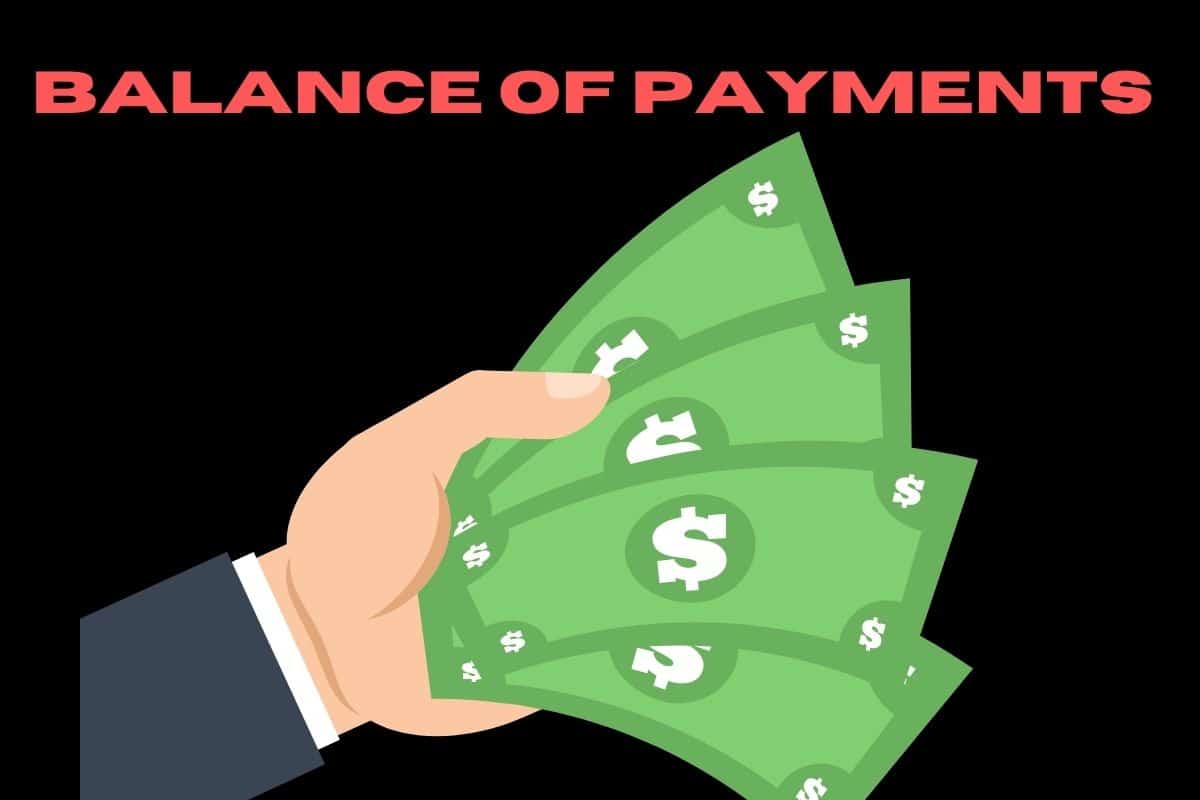Earnings per share, or EPS, is a financial metric that informs investors about a company’s profitability. To calculate earnings per share, take a company’s net income and divide it by the number of outstanding stock shares. When making investment decisions, savvy investors consider a company’s earnings per share. Here, you will get to discover an in-depth analysis of what earnings per share is, how to calculate one, its formula, and the ratio, among other facts. Let’s get to it.
What is Earnings Per Share?
Earnings per share is a profitability ratio that can help calculate the net earnings of each outstanding share of stock in a company at the end of a fiscal year. Simply put, earnings per share (EPS) is the amount of money that a company could allocate to each outstanding share of stock at the end of a given year if it decided to distribute all of its profits to the available outstanding shares.
This means that earnings per share tell us how a company might be profitable when measured in terms of the number of shareholders and earnings per share. It also allows us to compare the profit per share values of larger and smaller companies. The higher a company’s EPS, the more profitable it is thought to be.
Why is Earnings Per Share Important?
Analysts and investors pay close attention to a company’s earnings because they have the potential to influence the stock price. In general, if a company has strong earnings for a quarter, the stock price may rise. In contrast, falling earnings indicate that the stock price may fall.
Even if a company’s earnings aren’t blowing the competition away, any increase can be a sign of future profitability. However, because many factors influence this evaluation, investors can never be certain that this prediction will come true.
When you look back at the “dot-com boom,” earnings were significantly lower than investors predicted. Initially, investors were excited about the potential growth of the companies involved, which resulted in stock prices skyrocketing. Unfortunately, companies were not earning enough to keep up with the forecast, making their high valuations untenable. As a result, the stock prices of these dot-com companies plummeted.
Earnings Per Share Formula
The earnings per share (EPS) formula measures a company’s ability to generate net profits for common shareholders. This guide deconstructs the Earnings per Share formula in great detail.
It is somewhat arbitrary to use a single EPS value for one company. When compared to other companies in the industry and to the company’s share price (the P/E Ratio), the number becomes more valuable. Higher EPS indicates better profitability when comparing two companies in the same industry with the same number of shares outstanding. Earnings per share is commonly used alongside a company’s share price to determine whether it is relatively “cheap” (low P/E ratio) or “expensive” (high P/E ratio).
Earnings Per Share Formula = (Net Income – Preferred Dividends)/Weighted Average Number of Shares Outstanding
You can calculate earnings per share in a variety of ways. The earnings per share formula is presented in two versions below:
- EPS = (Net Income – Preferred Dividends) / End of period Shares Outstanding
- EPS = (Net Income – Preferred Dividends) / Weighted Average Shares Outstanding
The first formula calculates EPS using total outstanding shares, but in practice, analysts may use weighted average shares outstanding when calculating the denominator. Analysts frequently use last period shares outstanding because outstanding shares can change over time.
In financial reports, diluted EPS is also frequently mentioned. Diluted EPS includes outstanding options, convertible securities, and warrants, which can affect total shares outstanding if exercised.
Adjusted EPS is another type of earnings per share formula. This eliminates all non-core profits and losses, as well as any minority stakes. The goal of this calculation is to see only normalized profit or loss from core operations.
Earnings Per Share Formula Example
ABC Ltd earned $1 million in net income in the third quarter. The company declares a dividend of $250,000. The total number of outstanding shares is 11,000,000.
The EPS of ABC Ltd. would be:
EPS = ($1,000,000 – $250,000) / 11,000,000
EPS = $0.068
Because each share receives an equal share of the net income pie, they would each receive $0.068.
How To Calculate Earnings Per Share
The term “earnings per share” (EPS) refers to how much of a company’s accounting profit is attributable to each common share outstanding.
The net earnings of a company can be:
- Reinvested into operations
- Distributed to common shareholders in the form of dividend issuances
This allocation is ultimately a discretionary decision made by the company’s management team and board of directors with the goal of maximizing shareholder value. The retained earnings balance sheet line item is thus calculated by adding the prior period balance to the current period net income, then subtracting any common and preferred dividend issuances.
Earnings per share can be divided into two types: basic EPS and diluted EPS.
- Earnings Per Share (EPS): The basic EPS is a company’s net income divided by the number of common shares outstanding.
- Diluted Earnings Per Share (EPS): After adjusting for potentially dilutive securities, diluted EPS is a company’s net income relative to each common share outstanding (e.g. options, warrants, and convertibles).
How is EPS Used?
Earnings per share is one of the most important metrics used to determine a company’s absolute profitability. It is also an important factor in calculating the price-to-earnings (P/E) ratio, where the E in P/E stands for earnings per share (EPS). An investor can determine the value of a stock by dividing its share price by its earnings per share. This metric shows how much the market is willing to pay for each dollar of earnings.
EPS is one of many indicators that can be used to select stocks. If you’re interested in stock trading or investing, the next step is to find a broker who matches your investment style.
Because ordinary shareholders do not have direct access to earnings, comparing EPS in absolute terms may be meaningless to investors. Instead, investors will compare EPS to the stock’s share price to determine the value of earnings and how investors perceive future growth.
Basic EPS vs. Diluted EPS
The formula in the table above calculates each of these companies’ basic EPS. Basic EPS does not account for the dilutive effect of shares that the company may issue. When a company’s capital structure includes stock options, warrants, or restricted stock units (RSU), these investments, if exercised, may increase the total number of shares outstanding in the market.
Companies also report diluted EPS, which assumes that all shares that could be outstanding have been issued, to better illustrate the effects of additional securities on per-share earnings.
For example, for the fiscal year that ended in 2017, the total number of shares that could be created and issued from NVIDIA’s convertible instruments was 23 million. If this figure is added to the total number of shares outstanding, the diluted weighted average number of shares outstanding is 541 million + 23 million = 564 million shares. As a result, the company’s diluted EPS is $1.67 billion /.564 million = $2.96.
When calculating a fully diluted EPS, an adjustment to the numerator is sometimes required. For example, under certain conditions, a lender may provide a loan that allows them to convert debt into shares. The convertible debt shares should be included in the denominator of the diluted EPS calculation, but if that happens, the company will not have paid interest on the debt. In this case, the company or analyst will re-incorporate the interest paid on convertible debt into the numerator of the EPS calculation to ensure that the result is not distorted.
Limitations of EPS
The primary disadvantage of using EPS to value a stock or company is that it is calculated using net income. Non-cash expenses such as depreciation and amortization are deducted from net income, and because capital expenditures are lumpy, a company’s net income can vary greatly across reporting periods. Non-operating expenses, such as tax and interest payments, can have a significant impact on net income. Net income does not accurately reflect a company’s cash flow or the health of its business.
Furthermore, companies can and do manipulate their EPS numbers by changing the number of outstanding shares. Share issuances, splits, and stock buybacks all affect the denominator used to divide net income less preferred dividends.
EPS figures are most useful when compared to other metrics. The price/earnings (P/E) ratio, which compares a company’s stock price to its earnings per share (EPS), and the return on equity (ROE), which indicates how much profit a company generates from its net assets, are the two most common.
What is Earnings Per Share vs. Dividend?
EPS is used to calculate performance, but when a company makes money, shareholders don’t always have an easy way to access the profits. However, some businesses can either reinvest their equity or distribute it to shareholders in the form of dividends.
While the first option may assist the company in increasing profits, the second option allows shareholders to profit immediately, which many prefer in order to receive additional income on their ownership stake. Both options, ideally, will assist the company in increasing earnings, resulting in returns for investors. The board of directors would have to approve dividend payments in order to receive them.
What Is the Difference Between Basic EPS and Diluted EPS?
Analysts will occasionally differentiate between basic and diluted EPS. The basic EPS is calculated by dividing the company’s net income by the number of outstanding shares. It is the most commonly reported figure in the financial media and also the most basic definition of EPS.
Because it includes a more expansive definition of the company’s shares outstanding, diluted EPS will always be equal to or lower than basic EPS. It includes shares that are not currently outstanding but could become so if stock options and other convertible securities are exercised.
What is a Good Earnings Per Share Ratio?
Simply divide a company’s net income by the number of outstanding shares. However, to find top growth stocks, look for exceptional profit performance. Stocks with EPS growth rates of at least 25% over the previous year indicate that the company’s products or services are in high demand.
What is a Good EPS?
What constitutes a good EPS is determined less by its absolute value and more by its year-over-year change. The absolute value of a company’s EPS should rise each year, but the rate of rise should also quicken.
The EPS of a company can fluctuate due to changes in earnings, the total number of shares outstanding, or both. A company’s EPS can be increased by increasing its earnings or decreasing its share count through share buybacks, but if it increases its outstanding share count faster than its earnings, its EPS will fall.
Is a High EPS Ratio Good?
“No,” is the short answer. The greater the P/E ratio, the more you pay for every dollar of earnings per share. A high PE ratio is therefore bad for investors from a price-to-earnings standpoint.
What is Earning Per Share with Example?
ABC Ltd earned $1 million in net income in the third quarter. The company declares a dividend of $250,000. The total number of outstanding shares is 11,000,000. Because each share receives an equal share of the net income pie, they would each receive $0.068.
How do you Calculate basic Earnings Per Share?
The basic earnings per share (EPS) metric refers to the total amount of net income generated by a company for each outstanding common share. The basic EPS is calculated by dividing a company’s net income by the weighted average number of outstanding common shares.
Is it Better to have a Higher or Lower EPS?
The higher a company’s earnings per share, the better its profitability. Because the number of shares outstanding can change over time, it is best to use the weighted ratio when calculating earnings per share.
What does High EPS Indicate?
To elaborate, higher EPS indicates a profitable status, which suggests that the dividend payout may be increased over time. Also aids in comparing the performance of promising companies in order to select the best investment option.
Conclusion
Earnings per share is one of the most important factors investors should consider when assessing a company’s financial health. If you’re thinking about buying stock in a specific company, evaluating its earnings per share is one way to see if it’s on the right track to profitability.
However, keep in mind that EPS may not tell the entire story. Companies that repurchase their own stock can manipulate EPS, and it does not account for outstanding debt. Before you buy any stock in a company, make sure the investment aligns with your financial objectives.
- HOW TO CALCULATE EARNINGS PER SHARE, Simplified!!!
- What Is Shares Outstanding: Definition & Understanding Its Calculation
- CHEAP STOCKS TO INVEST IN: Top 10 Best Stocks to Buy Now
- Price To Earnings Ratio (P/E Ratio) Formula & Usage
- OUTSTANDING BALANCE: Definition, Difference, and Example
- SIGNATURE APP: Top 10 Apps, Gmail, iPhone & Free Apps






